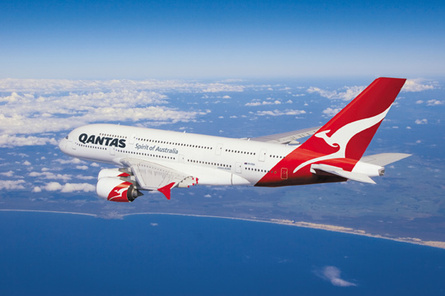A Qantas Airways Airbus A380 on the Singapore-London route was forced to divert to Dubai after an oil-related problem caused a shutdown of its number four engine.
Ninety minutes after takeoff from Singapore, the crew of QF31 detected "an engine oil quantity defect" in one of the A380's Rolls-Royce Trent 900 engines and shut it down, said Qantas.
The aircraft departed Changi airport at about 00:53 on 4 November, according to the airport's website.
It diverted to Dubai where it landed without further incident.

© Qantas
Qantas said the aircraft had 258 passengers and 25 crew aboard, all of whom disembarked safely.
Qantas was unable to provide the aircraft's registration number. It said engineers in Dubai are inspecting the aircraft.
This is not the first time Qantas has experienced oil-related issues with the Trent 900.
An oil leak in a Trent 900 engine was identified as the cause behind a partial power loss on a Qantas Airbus A380 this February.
The leak, which led to a gradual decrease in oil quantity in the number four engine, prompted the aircraft's flight crew to reduce the powerplant to idle thrust during a Singapore-London flight on 15 February. The aircraft, registration VH-OQC, did not experience a further oil level variation during the rest of the flight.
Inspections after the incident showed that there was an oil leak from an external high pressure/intermediate pressure (HP/IP) oil tube at its connection to the engine case, said the Australian Transport Safety Bureau (ATSB).
In November 2010, a fault in a Trent 900 oil feed tube caused the number two engine of a Qantas A380 to suffer an uncontained failure, resulting in an emergency landing in Singapore.
The incident prompted Rolls-Royce to remove 53 Trent 900 engines from service.
On 18 May, the ATSB said the engines were removed because of concerns over the wall thickness of the engines' oil feed pipes.
Investigations into the uncontained engine failure have so far showed that it was caused by a manufacturing defect in an oil feed pipe, which caused a section of the pipe to thin and subsequently crack. The crack led to an oil leak and internal oil fire that weakened the engine's IP turbine disk, which separated from the turbine shaft and punctured the engine case and wing structure.
Source: Air Transport Intelligence news























